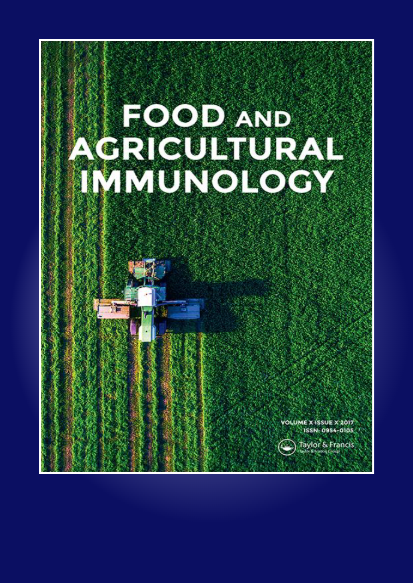Biotargets for mediation of arsenic–induced coronary heart disease by calycosin
IF 2.1
3区 农林科学
Q3 CHEMISTRY, APPLIED
引用次数: 0
Abstract
ABSTRACT Arsenic (As), an environmental pollutant, is a highly poisonous metalloid. Accumulated evidence has shown the association between As exposure and elevated risk of the development of coronary heart disease (CHD). Calycosin, a beneficial flavonoid, has demonstrated cardioprotective activities, including those against CHD, in preclinical studies. The anti-As-related CHD activity and mechanism of calycosin have not yet been elucidated. Here, we aimed to determine the core biotargets and molecular mechanisms of calycosin against As-interrelated CHD via integrated bioinformatic analysis, including network pharmacology and molecular docking. The network pharmacology data demonstrated 41 intersection genes of calycosin against As-related CHD, prior to the identification of 15 core targets. Additional in silico investigation indicated that mitogen-activated protein kinase-3 (MAPK3), epidermal growth factor receptor (EGFR), and interleukin-6 (IL6) were the primary pharmacological targets of calycosin for the treatment of As-related CHD. In addition, the therapeutic effects can be realized via cardioprotection-associated signaling pathways for reducing As-induced myocardial toxicity and impairment and boosting CHD functional reparation. In summary, calycosin mediates potent pharmacological effects in As-related CHD therapy functioning via multiple targets and multiple pathways. The results may eventually aid in promoting future clinical application after experimental verification.毛蕊异黄酮介导砷诱导冠心病的生物靶点
砷(As)是一种剧毒类金属,是一种环境污染物。积累的证据表明砷暴露与冠心病(CHD)发病风险升高之间存在关联。毛蕊异黄酮是一种有益的类黄酮,在临床前研究中已证明具有保护心脏的活性,包括抗冠心病的活性。毛蕊异黄酮的抗as相关性冠心病活性及作用机制尚未阐明。本研究旨在通过网络药理学和分子对接等综合生物信息学分析,确定毛蕊异黄酮治疗as相关冠心病的核心生物靶点和分子机制。网络药理学数据显示,毛蕊异黄酮抗as相关性冠心病的交叉基因有41个,鉴定出15个核心靶点。另外,计算机研究表明,丝裂原活化蛋白激酶-3 (MAPK3)、表皮生长因子受体(EGFR)和白细胞介素-6 (IL6)是毛蕊异黄酮治疗as相关性冠心病的主要药理靶点。此外,治疗效果可以通过心脏保护相关的信号通路来实现,减少砷诱导的心肌毒性和损伤,促进冠心病功能修复。综上所述,毛蕊异黄酮通过多靶点和多途径介导了与as相关的冠心病治疗的有效药理作用。经过实验验证,最终有助于促进未来的临床应用。
本文章由计算机程序翻译,如有差异,请以英文原文为准。
求助全文
约1分钟内获得全文
求助全文
来源期刊

Food and Agricultural Immunology
农林科学-毒理学
CiteScore
5.30
自引率
6.70%
发文量
52
审稿时长
2 months
期刊介绍:
Food and Agricultural Immunology is an international open access journal publishing original immunological research with applications in food, agricultural, environmental and veterinary science. Submissions describing the use of immunological techniques and methods are particularly welcomed.
The journal aims to expand our understanding of the interactions at the interface of food and immune systems including studies on:
-Development of diagnostic systems – all types of ligand-based assays, e.g. antibody, aptamer
-Application of ligand-based assays for the detection or identification of molecules of interest in food science, agricultural research, veterinary investigations and clinical systems relating to food allergy or sensitivity to agricultural chemicals
-Effects of food on the immune system
-Studies on allergy and allergic reactions
-Investigations into food allergies
-Development of allergen-free food systems
-Development of novel assay formats
-Applications of assay systems to the monitoring of food items in relation to safety and labelling
-Food quality issues, e.g. speciation, adulteration and contamination
-Comparisons between different analytical techniques
The journal publishes research and review articles and is essential reading for food scientists, immunologists and all those concerned with the interaction between food and immune systems.
 求助内容:
求助内容: 应助结果提醒方式:
应助结果提醒方式:


